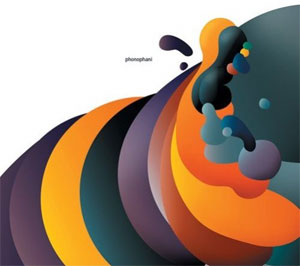PHONOPHANI: Phonophani (Rune Grammofon)
PHONOPHANI
Phonophani
RCD2054
Rune Grammofon 2006
13 Tracks. 75mins28secs

Phonophani’s Espen Sommer Eide began his solo quest with this self-titled opus back in 1998. The album originally received a very confidential airing on Geir Jenssen’s Biophon imprint in 1998, and has just been re-released by the ever-excellent Rune Grammofon with an additional three tracks. Eide has since released two further albums, Genetic Engineering (2001) and Oak Or Rock (2004), and has teamed up with Dag-Are Haugan to form Alog, with whom he has released three albums and a handful of EPs which were recently collected on the excellent Catch That Totem!
While both projects seem intricately linked and thrive from a similar ethic, Phonophani’s scope is slightly darker and relies on more openly electronic textures. Eide already demonstrates here a clear taste for intricate sonic structures and elaborate arrangements based on a surprisingly mature approach to experimentation. Right from the pulsating dub swathes of the opening I. F. A., Eide applies melodic patterns and noises onto sumptuous abstract backdrops. Relying largely on organic rhythmic elements found evolving deep within his soundscapes rather than on conventional drum/bass sequences, Eide unleashes clouds of glitches, bleeps and melodic debris onto vast landscapes and manipulates the atmospheric fabric of his compositions to ensure consistency of tone all the way through.
As the album progresses, echoes of life can be found scattered over a handful of tracks, most prominently on Duration-Happiness, on which a heavily treated human voice, possibly that of Eide, rises above a lush orchestral mist to bring the track to a slightly unnerving end, while a child’s voice illuminates the solemn Sol, and on the enigmatic C, which seems built around the skeletal remains of Simon & Garfunkel’s Mrs Robinson. Elsewhere, Eide carves delicate dreamy sequences out of minimal sound sources. Pieces such as Zumas, Kaliphoni and Order Of Disappearance show a much more spiritual side to his work as he articulates bleeps and airy melodies around hypnotic noise structures. If these can appear a tad dated now, they are so tightly integrated with the rest of the album that they never actually appear out of place. This reissue features three previously unreleased tracks recorded during the same period. Fitted at the end of the original record, these compositions do not exactly bring anything more to the album but their insertion allow the listener to wander in Phonophani’s carefully devised space a few more minutes.
On this debut release, Espen Sommer Eide assembles sounds, structures and atmospheres with impressive maturity and lays down the blueprint for his work both as Phonophani and as part of Alog. While the album doesn’t go as deep into experimental territories as its successors, it is, eight years after its original release, a surprisingly fresh-sounding and relevant collection of intricate electronic music.
Labels: Album review, Phonophani, Rune Grammofon



<< Home